
You’re an ambitious woodworker, passionate about creating stunning pieces that showcase the beauty and versatility of wood. Contrary to popular belief, you’ve heard whispers about a mystical type of wood that sinks in water. Curiosity piqued, and you set off on a quest to learn more about this elusive material.
Welcome, inquisitive woodworker, to your ultimate resource on the considerations when using wood that sinks in water.
(adsbygoogle=window.adsbygoogle||[]).push({})
Table of Contents
Introduction To Sinking Wood
Wood may float or sink in water, but what exactly separates these two categories? As you may have guessed, it all comes down to the density of the wood relative to the density of water. Highly dense wood species possess unique characteristics not found in their lighter counterparts.
In short, sinking wood is denser than water, making it a unique and sought-after material for certain applications. However, there are several factors one must consider when working with sinking wood.
“The density and hardness of sinking wood make it an appealing choice for furniture makers and woodworkers alike, but working with this unique material can present challenges,” says Ross Adams, a respected woodworker and master craftsman.
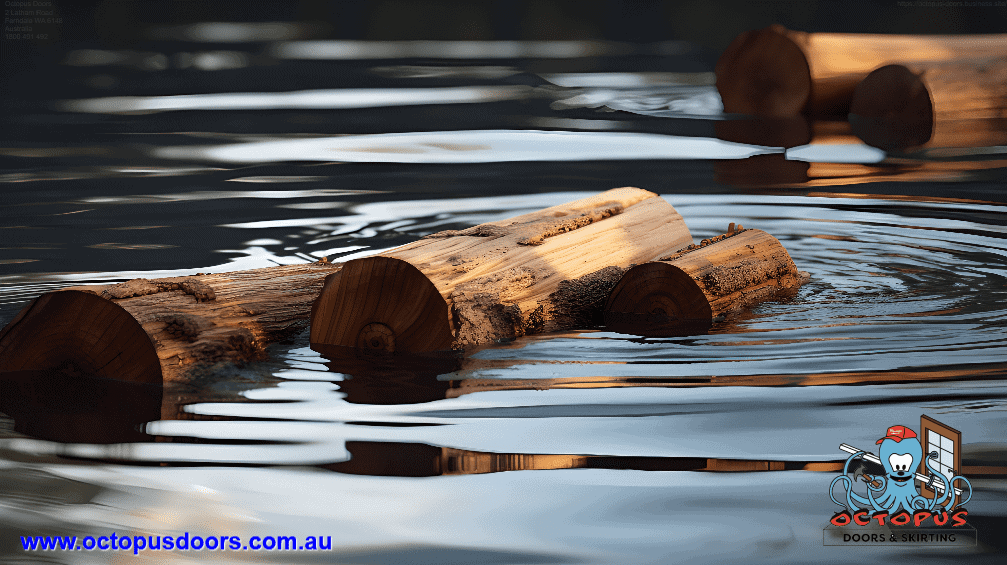
The Science Behind Sinking Wood: Density
Water has a density of 1 g/cm³. For wood to sink, its density must be greater than that.
Although most wood species have a density lower than water, there are few that surpass this threshold, opening up a world of possibilities for those willing to explore these rarities. But why are these woods denser than water? A combination of factors, including the wood’s structure and the concentration of lignin and cellulose within it, are responsible for this property.
(adsbygoogle=window.adsbygoogle||[]).push({})
Types Of Sinking Wood
Lignum Vitae (Guaiacum officinale)
Lignum Vitae, also known as the “Tree of Life,” is a truly exceptional wood species. Native to the Caribbean and the northern coast of South America, Lignum Vitae boasts an unrivalled combination of strength, durability, and density, making it the perfect choice for applications where these qualities are essential.
Key Characteristics:
- Density: Topping the charts with a density ranging between 1.2 to 1.4 g/cm³, Lignum Vitae is the densest wood in the world.
- Working Properties: Its oily composition yields a natural lubrication that allows for smooth cutting and minimal tool wear, despite its extreme hardness—up to 4,500 lbs on the Janka scale.
- Colour: Lignum Vitae exhibits a beautiful range of colours, from a pale yellow heartwood to a deep, rich green.
- Applications: Its outstanding properties make it ideal for heavy-duty engineering applications such as bearings, propeller shafts, and mallet heads. Additionally, its vibrant colours make it a popular choice for ornamental turning and heirloom woodworking projects.
Black Ironwood (Olea laurifolia)
Black Ironwood, found in the southern regions of Africa, comes in as a close second for the title of the world’s densest wood. Known for its attractive dark colour and exceptional resistance to wear, Black Ironwood has carved out a niche among artisans and industrialists.
Key Characteristics:
- Density: With a density of approximately 1.2 g/cm³, Black Ironwood is one heavyweight contender.
- Working Properties: This species is notoriously difficult to work with, as its extreme density (Janka hardness of 3,670 lbs) poses challenges for cutting and shaping. Carbide-tipped tools are highly recommended.
- Colour: As the name suggests, Black Ironwood displays a range of dark brown to black hues, often accented with streaks of lighter brown.
- Applications: Due to its remarkable resistance to wear, Black Ironwood is perfect for applications such as railroad ties, construction materials, and precision-engineered parts. Its highly attractive appearance also makes it an apt choice for custom furniture, sculpture, and turning projects.
Brazilian Ebony (Diospyros sp.)
Brazilian Ebony is characterized by its extreme hardness and rich dark colour. Found in the tropical regions of Central and South America, this highly sought-after material lends itself perfectly to furniture making and other woodworking projects, where both form and function are paramount.
Key Characteristics:
- Density: Brazilian Ebony’s density averages around 1.1 g/cm³, making it an impressive heavyweight in the world of woodworking.
- Working Properties: Due to its extreme hardness—up to 3,840 lbs on the Janka scale—Brazilian Ebony can be quite challenging to work with. However, sharp tools and slower cutting speeds can help tame this exotic beast.
- Colour: Exhibiting a deep, dark brown colour with streaks of black, Brazilian Ebony is strikingly beautiful and adds sophistication to any woodworking project.
- Applications: Its toughness, stability, and attractive appearance contribute to its popularity in the areas of high-end furniture making, cabinetry, and flooring. Moreover, its tonal qualities also make it an ideal choice for crafting musical instruments.
It’s vital to note that sourcing these rare woods responsibly is essential. Ensuring the use of ethically harvested and sustainably sourced materials will maintain the health of these ecosystems and prevent overexploitation.
| Wood Species | Density (g/cm³) | Janka Hardness (lbf) | Origin | Notable Applications | Key Features |
|---|---|---|---|---|---|
|
Lignum Vitae (Guaiacum officinale) |
1.2 – 1.4 | 4,500 | Caribbean and Northern South America | Bearings, propeller shafts, mallet heads, ornamental turning | Densest wood in the world, natural lubrication, vibrant colours |
|
Black Ironwood (Olea laurifolia) |
1.2 | 3,670 | Southern Africa | Railroad ties, construction materials, precision-engineered parts, custom furniture | Exceptional resistance to wear, dark colour, difficult to work |
|
Brazilian Ebony (Diospyros sp.) |
1.1 | 3,840 | Central and South America | High-end furniture, cabinetry, flooring, musical instruments | Extreme hardness, rich dark colour, stability, and tonal qualities for instruments |
| Woodworking Challenges | Sustainability Concerns | Historical Uses | Common Names | |
|---|---|---|---|---|
|
Lignum Vitae (Guaiacum officinale) |
Oily composition requires special attention when gluing; it should be pre-drilled before screwing | Overexploitation has led to CITES regulations: trade of this species is now regulated. | Traditional shipbuilding; used to create balls, pulleys, and other parts for ships | Tree of Life, Gaiac tree |
|
Black Ironwood (Olea laurifolia) |
Sharpening tools frequently is crucial due to the wood’s dense nature | African Black Ironwood is not currently listed in the CITES Appendices but should be used sustainably | Various traditional African tools and weapons; fence posts | Ironwood, Dead Man’s Hand |
|
Brazilian Ebony (Diospyros sp.) |
Difficult to work with due to its interlocked grain pattern and high-density blunting cutting tools | Brazilian Ebony has been overharvested, leading several species in the genus Diospyros to be listed on the IUCN Red List. | Ancient ebony was often used to make ornamental turning pieces in Europe, as far back as Roman times. | Ebony black or blackwood |

Sourcing And Sustainability
Given the rarity and high demand, the sustainability of sinking wood species has become a critical consideration. Organizations like FSC and PEFC work to promote responsible forestry, ensuring the long-term availability of these woods without harming the environment.
Before purchasing sinking wood, verify that your supplier is adhering to sustainable practices and holds certifications from such organizations.
Working With Sinking Wood
Though highly desirable, sinking wood can pose challenges during woodworking. The density and hardness can quickly dull standard tools and make shaping and cutting a laborious task.
Hand tools like chisels, goulettes, and hand planes, made from high-quality metal alloys or carbide-tipped, can help overcome these challenges. Other tips for working with sinking wood include using slower cutting speeds, more frequent sharpening of tools, and allowing for ample drying time to avoid warping or cracking.
“Working with sinking wood requires patience and good technique. Start with sharp tools and work slowly. Enjoy the journey—it’s a rewarding experience,” advises renowned woodworker Samantha Baker.
(adsbygoogle=window.adsbygoogle||[]).push({})
Applications And Potential Use Cases
Sinking wood is well-suited for a variety of applications, including:
- Intricately carved furniture
- Heavy-duty industrial components
- Musical instruments
- Luxury flooring
These woods’ longevity, resistance to wear and decay, and overall beauty lend themselves to projects that require lasting performance and aesthetic appeal.
Expert Tips And Tricks
- Make responsible choices by exploring alternative local species with similar characteristics to minimize the environmental impact of your projects (sources like the Wood Database are invaluable for this).
- Connect with other woodworkers to share knowledge and experiences when dealing with sinking wood. You never know what clever tips you might learn from fellow enthusiasts.
- Regularly monitor your tools and equipment to extend their life and ensure accurate, clean cuts, especially when working with sinking wood.
Discovering the world of sinking wood can offer endless opportunities and inspire innovation in your woodworking ventures. By understanding the factors to consider, from sourcing to working with the material, you’re well on your way to creating masterpieces unlike any other. Happy crafting!
(adsbygoogle=window.adsbygoogle||[]).push({})
Related Articles:
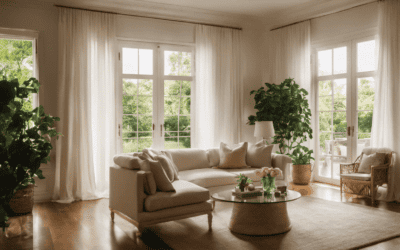
French Doors With or Without Curtains
We’ve got the inside scoop on French doors with or without curtains! Let’s dive into the world of elegant design and modern convenience. When it comes to French doors, one important decision is whether to use curtains or not. With curtains, you can enjoy excellent…
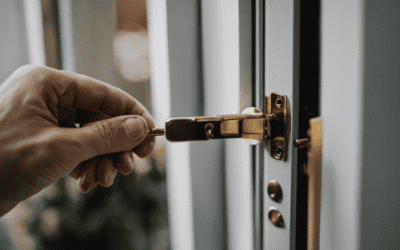
How to Make French Doors Lock
Did you know that French doors are popular for homeowners, bringing in natural light and adding an aesthetic appeal to any space? However, one concern we all share is the security of these doors. Multiple glass panels may not be as secure as traditional doors. But…

French Door Double Glazed
Have you ever felt a draft coming through your French doors, disrupting the comfort of your home? Well, we have the perfect solution for you: French door double-glazed. This remarkable design not only enhances the aesthetic appeal of your home but also provides…
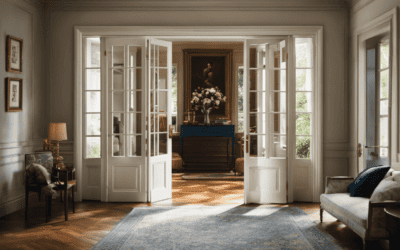
How to Get French Doors to Line up
Are your French doors out of alignment? We’ve got the solution for you. In this article, we’ll show you step-by-step how to get those doors back in line. Loose hinges or an uneven frame can throw off the alignment, but don’t worry; we’ve got the fix. By…
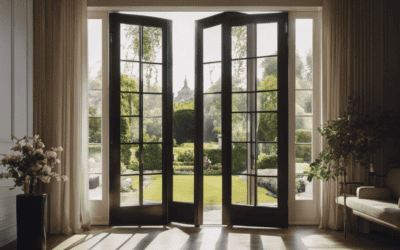
What Are Lite French Doors
We’re here to tell you all about Lite French doors. You know, those stylish doors with glass panes that bring in tons of natural light. They’re perfect for inside and outside spaces, and they come in all styles to match your home’s decor. But what makes Lite French…

Can You Tint French Doors: A Comprehensive Guide
Did you know that tinting French doors can offer a range of benefits, such as increased privacy, UV protection, and enhanced aesthetics? In our comprehensive guide, we’ll explore the world of French door window films and discuss why tinting these doors is a practical…

How to Identify French Door Manufacturer
Today, we seek to uncover the secrets behind identifying the illustrious manufacturers of French doors. This comprehensive guide will delve into the world of customer receipts, hardware logos, glass etching, and manufacturer identification labels. Brace yourselves for…

How to Protect French Doors From Hurricane
Are you worried about the vulnerability of your French doors during hurricanes? We understand your concerns and want to provide you with the best solutions. One option is to install storm shutters or plywood boards, which create a strong barrier against debris and…

How to Build a Door Jamb for French Doors
Are you ready to transform your entryway into a stunning masterpiece? Well, buckle up because we’ve got the ultimate guide on how to build a door jamb for French doors. It’s time to say goodbye to those pesky drafts and hello to energy efficiency and style. With a bit…

Do You Need Planning Permission for French Doors?
Did you know that adding French doors to your home can significantly increase its value? Well, we certainly didn’t until we dug deeper into the topic. In this article, we’ll explore whether you need planning permission for French doors and provide you with all the…
Message Us
Get In touch below. Ask Any Question or Start a Free Quote
Call Us
1800 491 492

I’m James Davis, a carpenter with eight years of experience in carpentry services, repairs, installations, renovations, and maintenance of interior doors. I have a diploma in carpentry and joiner trade from the Education Skills Australia Institute and take pride in delivering high-quality results to ensure customer satisfaction. I’m a blog writer for Octopus Doors Company and enjoy sharing my knowledge and tips on maintaining security measures and choosing the right door materials, paints, or handle styles. I specialize in custom-made interior doors and strive to make every home look fabulous. Contact me anytime for help with door-related issues.